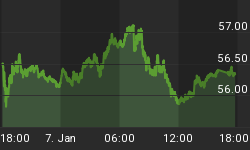
There is growing awareness that gold is accumulating in Asia. Indians have for a long time been the largest buyers of gold and have a tradition of giving gold as gifts at auspicious times. This gold is mostly classified as jewellery in the statistics, and it is assumed by westerners that a rising gold price will dampen demand from this source. This misunderstands the Indian market on many levels.
The reason gold is bought as jewellery is because the processing costs are very low. It is more accurately a reliable store of value, which for Indians is the real point. Furthermore, India's experience with paper money has not been happy. Imagine a young couple who married in the mid-1960s. The bride might have been given five or six ounces of gold in the form of bangles and other jewellery items. The cost including an Indian jeweller's mark-up in 1965 would have been about 200 rupees per ounce at pure equivalent, making a dowry of 1,200 rupees (1965 exchange rate was Rs4.76 to US$1.00). Every Diwali, wedding anniversary and birth of a child, the dutiful husband would have bought more gold if he could afford it. Some would have been passed on to their children as they got married and had families of their own.
Today the price of gold is about 95,000 rupees. As a form of savings gold has beaten every other investment our Indian couple could have made, hands down. They would now be in their sixties, and looking forward to a comfortable retirement, centred on family, children and grandchildren. Contrast this with our more sophisticated world, with our underfunded pensions falling short of what we actually need to live on. Many of us will rely on the state for a minimal pension, for which the state will heavily tax our children. And the Western equivalent of our Indian couple faces the prospect of their retirement annuity, if they have one, buying less and less as they get older.
So don't dismiss India's love of gold as just tradition. Indians in their investment choices have shown considerably greater wisdom than most of their Western counterparts. And it is not just Indians; there is the whole of South East Asia, and the Chinese who have much catching up to do having been banned from owning gold until only eight years ago. According to Albert Cheng of the World Gold Council, the Chinese public in that short time have now overtaken Indians as a buyer of gold. The difference between the Indians and the Chinese is the Indian government has adopted Keynes as its guru, so it hates gold, thinking its people are backward. The Chinese government instead is encouraging its population to buy more and more. Between China, India and all the other gold-loving countries in South-east Asia, there are now nearly three billion people certain in the knowledge that gold is a far better long-term store of value than any paper currency.
The other conclusion we can draw from this is that price doesn't matter. Look what's happened since gold peaked a year ago: Asian buying has increased all the time while Western fund managers and the media have bickered about whether gold is going up or down. But the Asians instinctively know that what is actually happening is that paper money is going down, and hard experience tells them it never goes up.
















